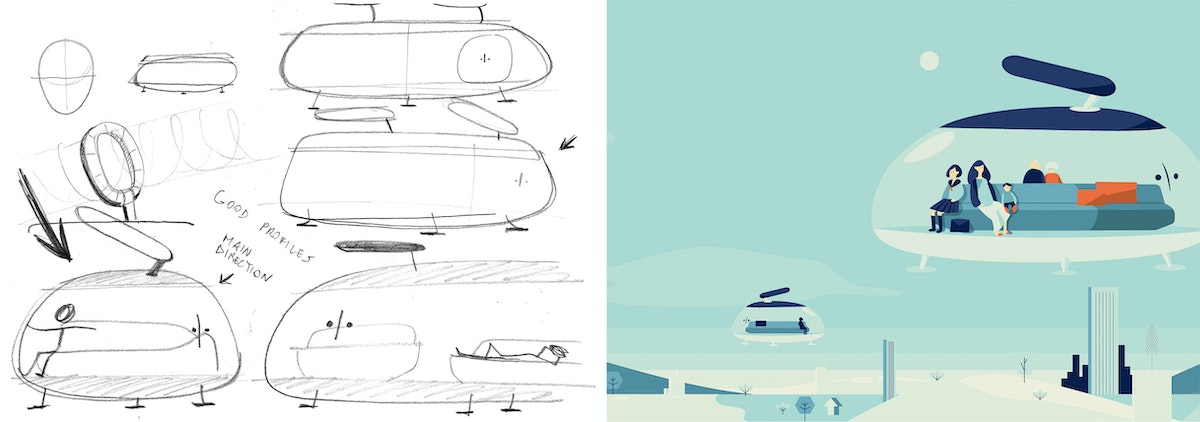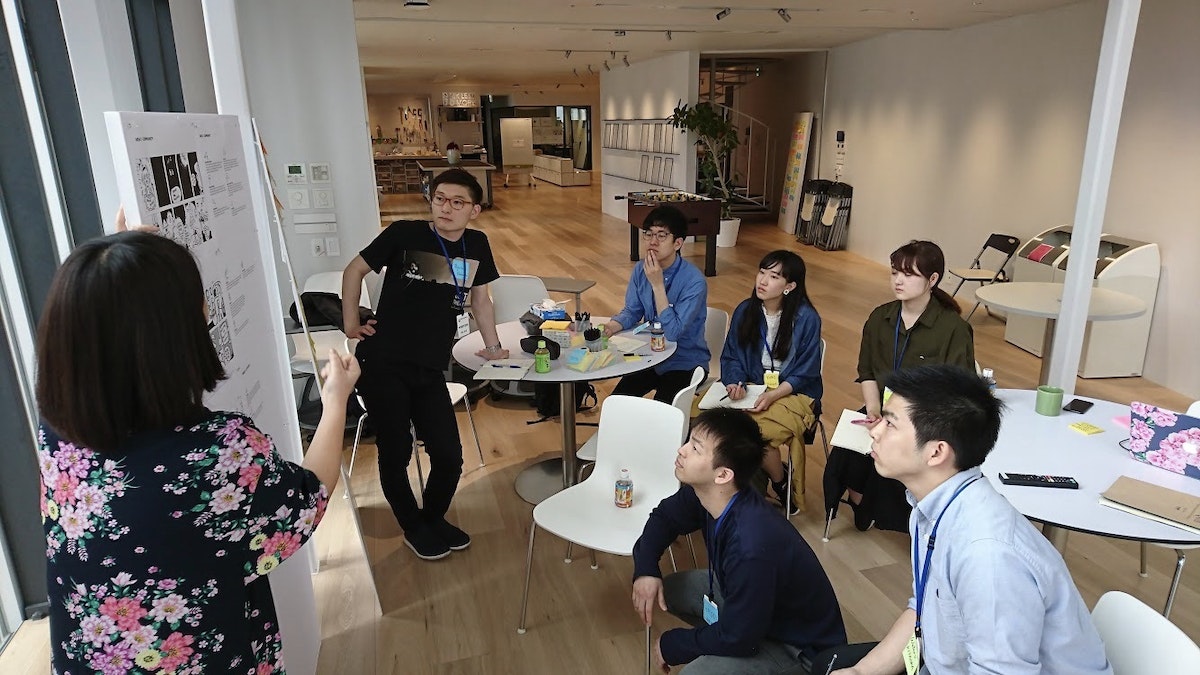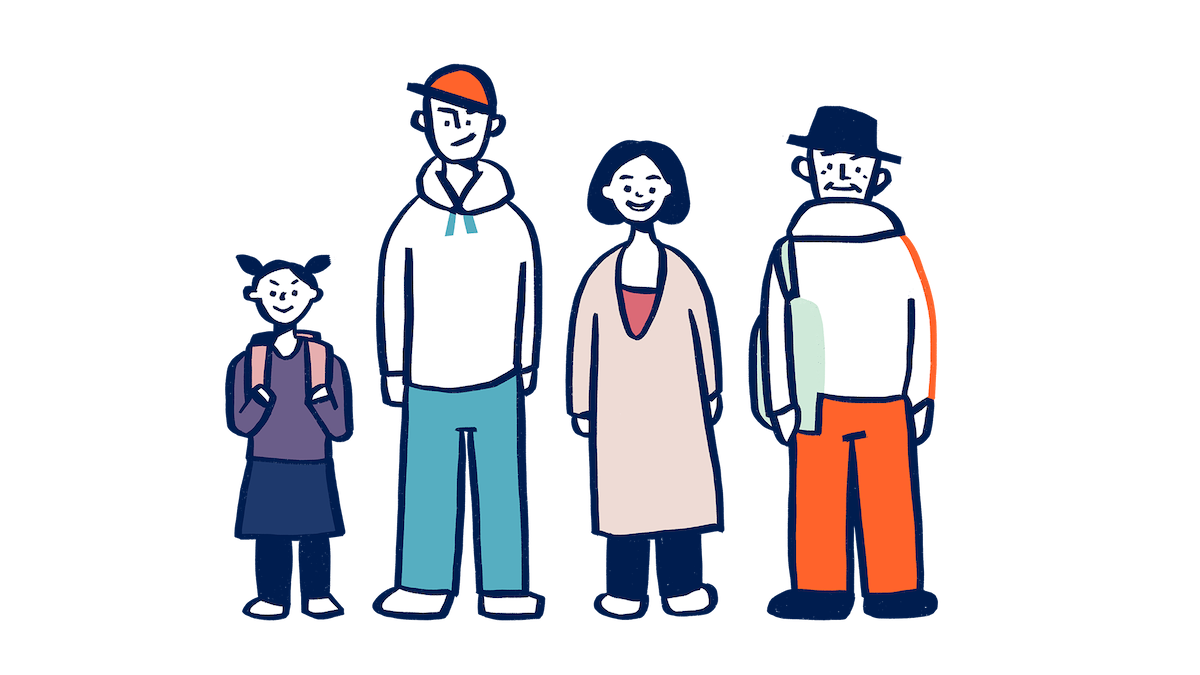Designing the city skies of tomorrow
.jpeg)
The speed and scale of change in our world are unprecedented. As more people relocate to cities, our lives are impacted by urbanization problems such as pollution, congestion, depopulation of rural areas, resource, and energy deficiencies.
What if we could use the sky to provide alternative solutions to these problems, creating more space for living and transportation? What exciting future awaits us?

At JAXA’s Aeronautical Technology Directorate (ATD), researchers are conducting research and development on aviation science and technology for the future. They are working to affect positive impact through research like noise reduction of airframe and an integrated aircraft operation management system for disaster relief and crisis management.
Normally, JAXA begins their projects by examining the needs of the aircraft industry or comparing themselves against global technology standards. This approach often leads to ideas that are merely an extension of the current technology. JAXA needed a new approach in order to create radical ideas and real change.
The key question was: What solutions would emerge from prioritizing people’s needs over the most advanced technological possibility—taking a human-centered approach to tackling the most pressing societal challenges?
JAXA ATD voluntary partnered with IDEO to attempt to answer this question, identifying new research areas by envisioning people’s needs in the near future. Together, JAXA and IDEO developed four scenarios of future societies.
The scenarios do not necessarily focus on technologies. Rather, the focus is on telling stories that help readers put themselves in the shoes of the four personas. At the same time, the team worked with industrial designers to illustrate convincing demonstrations of the vehicles and machines of the future.
JAXA’s team embraces the belief that “technologies developed at JAXA should incorporate emotional aspects to blend seamlessly into people’s lives.” Driven by this philosophy, the visual design of the four scenarios used a friendly illustration style intended to be approachable and understandable for people of all ages.

In order to develop human-centered concepts from scratch, the IDEO and JAXA team first undertook research and inspiration-gathering. They skydived, observed cities from above, brainstormed with students from the department of architecture at Waseda University. They interviewed airline employees, a former Judo world champion, skyscraper lovers, a business producer who focuses on new working styles. Throughout the research phase, the team explored the possibilities of the sky as a “living space,” not just a place for transportation.
The team was surprised and excited when they learned from a former fighter pilot that old cockpit designs were inspired by the Japanese tea room, highlighting a historic precedent for taking inspiration from real life to inform new technology designs.

The team synthesized their research and developed several concepts, each informed by a different social issue or pressing concern. Each issue was brought to life through a fictional personal narrative.

How might we relieve city congestion and pollution using the sky, while still keeping it clean and blue? Floating public lights, a skyway that regulates air traffic, camouflaged planes that keep the sky blue—concepts introduced in this scenario were the closest to the technologies already being researched at JAXA ATD. They show us how the sky could become an infrastructure that supports our daily lives. Meet Ayame, a girl from Gunma prefecture, ready to begin her college life in Osaka.
How might we make travel feel easy for people of all ages, no matter how far they need to go? While the researchers at JAXA ATD are working to improve the mobility of aircraft, like reducing air friction or increasing the engine efficiency of aircraft, this scenario explored how people could travel door-to-door through the sky with or without aircraft. A day-in-the-life of Naoto, a 72-year-old man who commutes twice a month from Tottori to Tokyo for medical checkups.
How might we leverage the sky as a resource for reusable energy and economic growth? One of the criteria of JAXA’s R&D activities is to improve the environment. While JAXA has been focusing on “protecting” the environment, this scenario focused on “creating” new environments. A day-in-the-life of Toshi, who runs a “sky-to-table” farming business.
How might we help people live with peace of mind, even during a disaster? JAXA’s disaster relief technologies have been extremely valuable in countries like Japan, which frequently suffers from natural disasters. In this scenario, we approached the problem from victims’ point of view while exploiting the potential of a network of aircrafts and other flying objects. Here's the story of Yuri, a victim of an earthquake in Tokyo who reunites with her family after evacuating to the sky.
The purpose of the project website is not to present answers, but to introduce new directions towards an exciting future. By presenting JAXA ATD’s vision through these four scenarios, the team invited people from all industries and of all ages to participate in co-creating the future.
Just like movies, cartoons, and novels from childhood stimulate the imagination, this project aims to spark new conversation and vision for a radically different, positive future.
By illustrating and communicating a more human-centered future to a wider audience, Japan’s top aeronautical technology development agency may already be changing the future of the sky for the better.
Press stories
Curious about how this kind of thinking could benefit your organization? We’d love to hear from you.
Subscribe

.svg)










